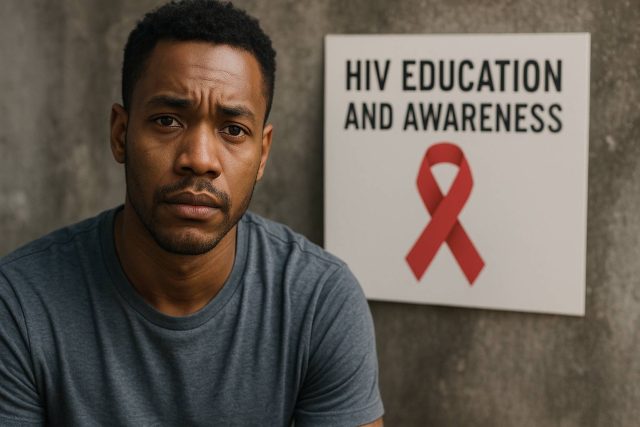In a world that has made tremendous medical advancements, one might assume that public understanding of HIV has kept pace. However, despite over four decades of global effort, HIV education and awareness still face significant challenges. From misconceptions about transmission to limited access to testing in underserved communities, critical gaps remain. Are we truly doing enough to educate the public, prevent new infections, and combat stigma?
This article dives into how far we’ve come—and where we still need to go—to make HIV education and awareness a consistent, inclusive, and effective public health priority.
Table of Contents
- Progress and Pitfalls in HIV Education
- Reaching the Right Audiences
- Modern Tools for HIV Awareness
- Closing Gaps in Access and Inclusion
- Conclusion and FAQs
Progress and Pitfalls in HIV Education
Over the past few decades, public health agencies have made strides in spreading information about HIV. Campaigns in the 1980s focused on fear-based messaging. By the 2000s, efforts evolved to emphasize prevention, testing, and treatment. Today, campaigns are more nuanced, promoting compassion, facts, and access to care.
Nonetheless, challenges persist. A 2023 CDC survey revealed that nearly 1 in 3 Americans aged 18–29 still harbor outdated beliefs about HIV transmission. Many assume HIV is only a concern for specific groups, even though the virus does not discriminate by gender, sexuality, or race.
While school-based sex education programs often include HIV topics, the quality and comprehensiveness vary widely by state. Some curricula lack inclusive language or omit updates about pre-exposure prophylaxis (PrEP) and undetectable = untransmittable (U=U) messaging. These gaps result in a generation that may not fully grasp current prevention options or understand the realities of living with HIV today.
Reaching the Right Audiences
To make a difference, HIV education and awareness campaigns must be tailored to diverse populations. General messaging often fails to resonate with those most at risk or impacted by the epidemic.
For example, Black and Latino communities continue to experience disproportionately high rates of new HIV diagnoses. Similarly, transgender individuals and people who inject drugs face systemic barriers to accurate information and care. Reaching these communities requires culturally competent education strategies that go beyond surface-level inclusion.
Trusted messengers play a crucial role. Community health workers, peer educators, and influencers within marginalized groups often have greater impact than top-down campaigns. Collaborative efforts between local organizations and national agencies can ensure that messaging is both relevant and accessible.
Additionally, language access matters. Educational materials must be available in multiple languages and literacy levels to be effective.
Modern Tools for HIV Awareness
Technology has opened new pathways for promoting HIV education and awareness. Social media campaigns, mobile apps, and online resources now allow organizations to reach broader audiences with timely, engaging content.
One successful example is the use of geotargeted ads for PrEP awareness among men who have sex with men (MSM). These campaigns provide information on nearby clinics, eligibility, and insurance coverage.
Telehealth platforms are also making it easier for individuals to learn about HIV, schedule tests, and access treatment. These tools are especially valuable in rural or stigmatized areas where people may fear visiting a clinic in person.
However, digital solutions must be supported by credible, evidence-based information. AI-generated content and influencer posts can spread misinformation if not carefully vetted. Maintaining partnerships with trusted healthcare sources like AIDS.org ensures that content remains accurate and compassionate.
For individuals seeking advice or community support, forums like Healthcare.pro can help users find HIV-informed providers and peer support networks.
Closing Gaps in Access and Inclusion
The promise of HIV education and awareness will fall short unless we close systemic gaps. Youth in foster care, incarcerated individuals, migrants, and people without stable housing often lack access to consistent education and services.
Policy changes are needed to ensure that HIV education is part of broader health equity initiatives. This includes investing in comprehensive sex education, funding for community-based organizations, and expanding access to testing and treatment regardless of insurance status.
Healthcare providers must also play an active role. Medical schools should include updated HIV content, and continuing education should equip clinicians to have informed, nonjudgmental conversations with patients. Without trained professionals, patients may never receive accurate or affirming information.
Finally, stigma remains a significant barrier. Even with advancements in antiretroviral therapy and prevention, fear and misinformation continue to isolate people living with HIV. By fostering a culture of empathy, truth, and science, we can ensure education is not just delivered—but also received.
Conclusion
So, are we doing enough when it comes to HIV education and awareness? While progress has been made, much more needs to be done. Tailored, inclusive, and accessible education must be prioritized. By harnessing technology, empowering community voices, and reinforcing health equity, we can close the knowledge gap and make lasting change.
Now is the time to move from awareness to action—because when people know better, they do better.
For more articles on AIDS and HIV education, visit AIDS.org.
FAQs
What does HIV education and awareness mean?
It refers to teaching people how HIV is transmitted, how to prevent it, and how to support those living with the virus.
Why is HIV education still important in 2025?
Because misinformation, stigma, and new infection rates persist—especially in underserved communities.
How can I help raise awareness?
You can share accurate resources, talk openly about HIV, and support organizations working in prevention and education.
Is HIV still a public health threat?
Yes. Although treatments have advanced, HIV remains a serious health issue that requires ongoing education and prevention.
Where can I find trustworthy HIV resources?
Visit reputable websites like AIDS.org or talk with an HIV-informed provider through Healthcare.pro.
This content is not medical advice. For any health issues, always consult a healthcare professional. In an emergency, call 911 or your local emergency services.
